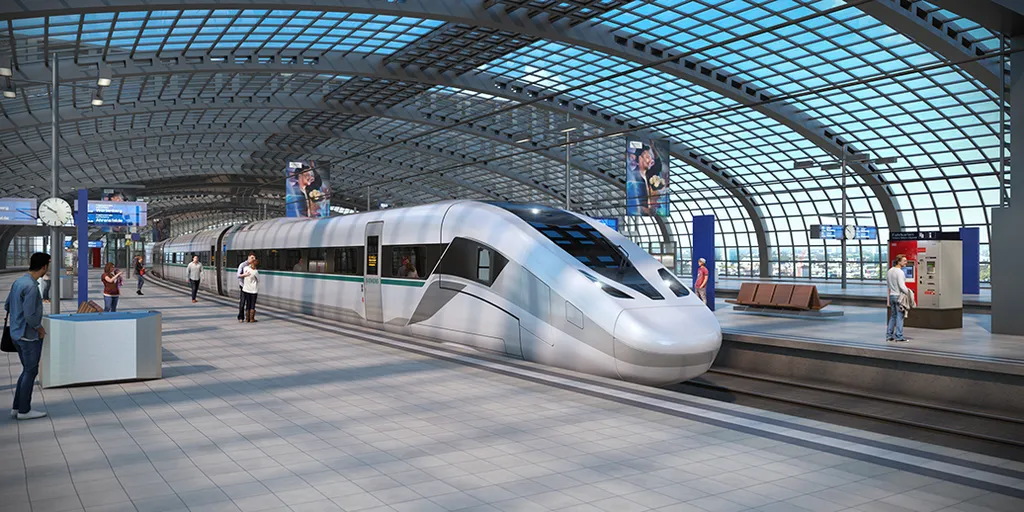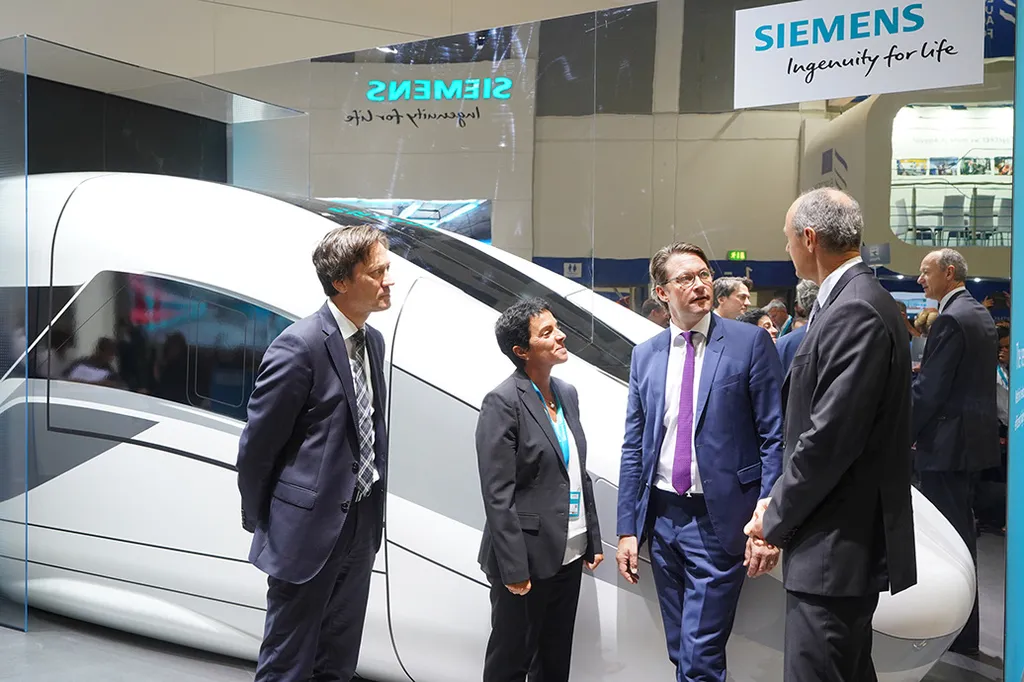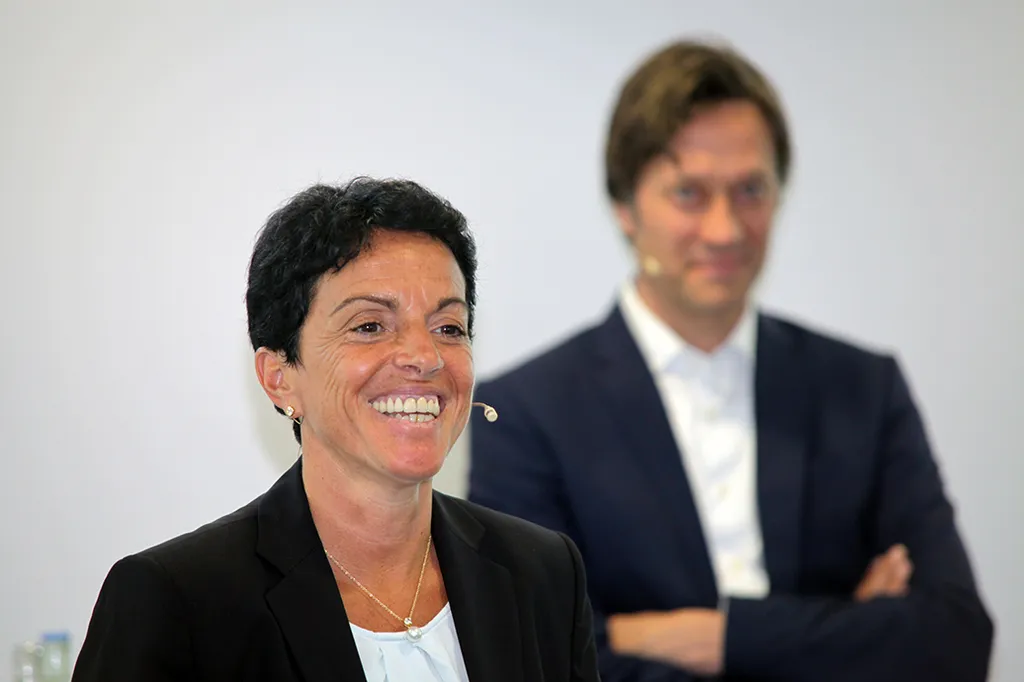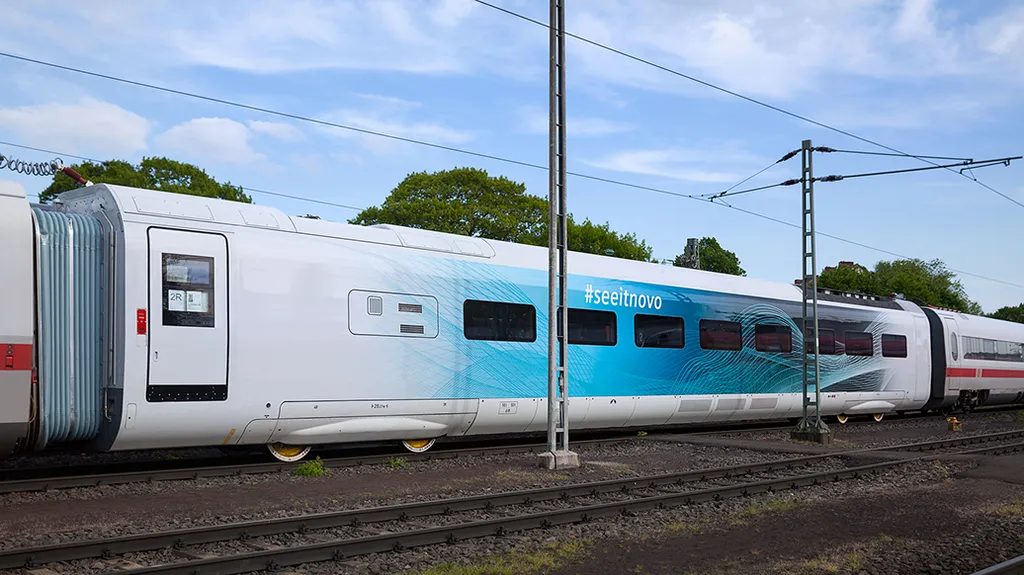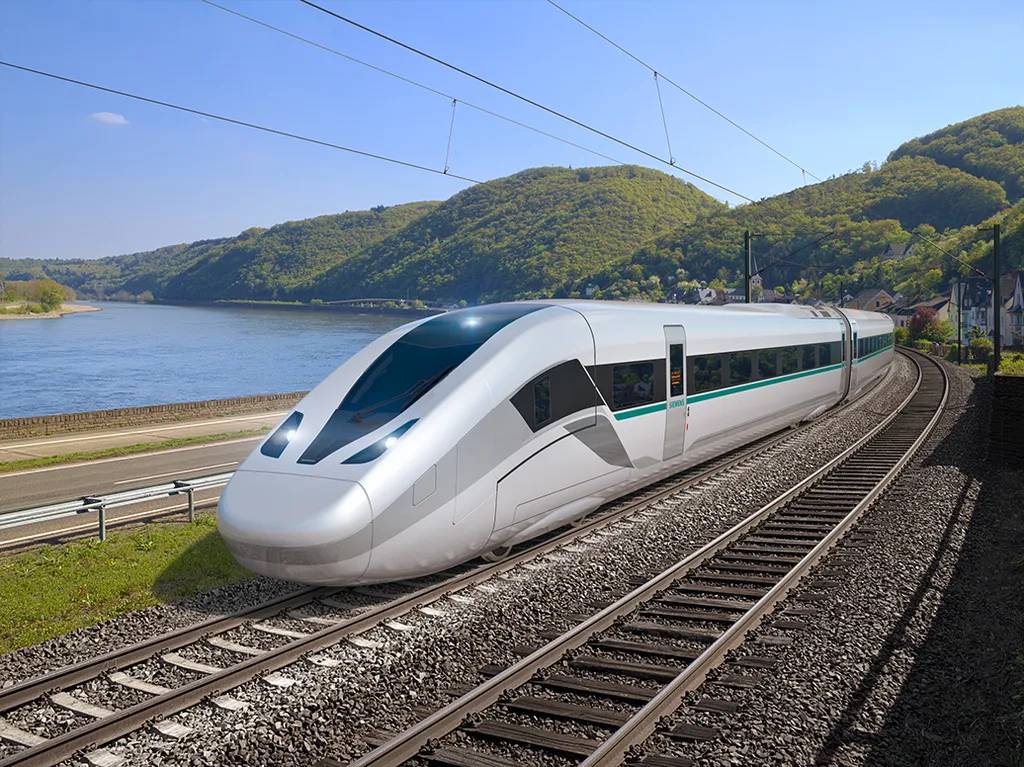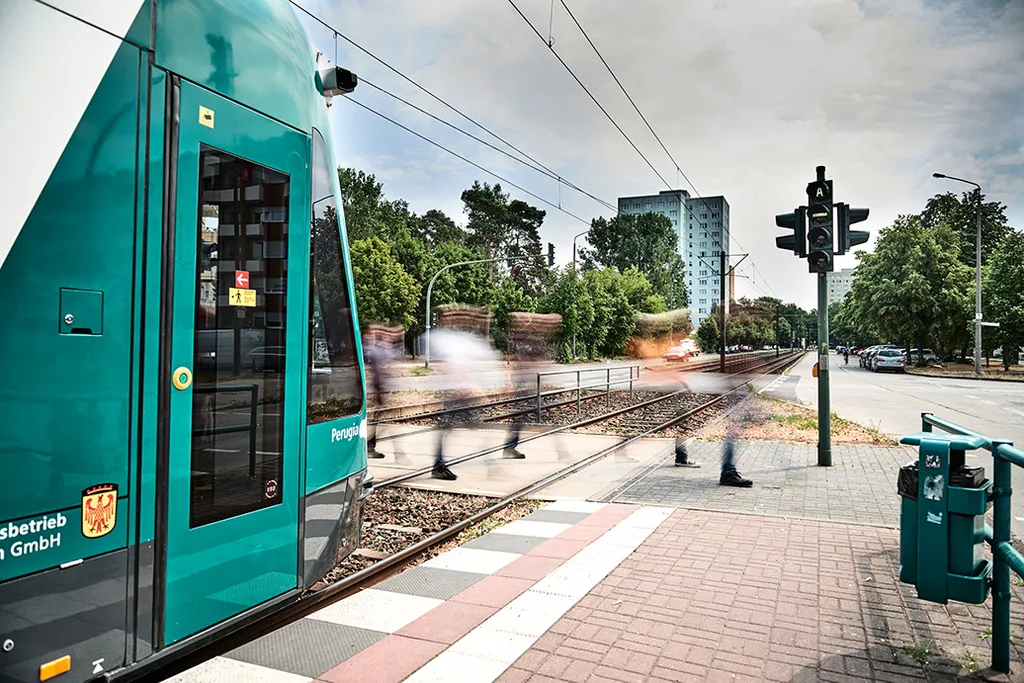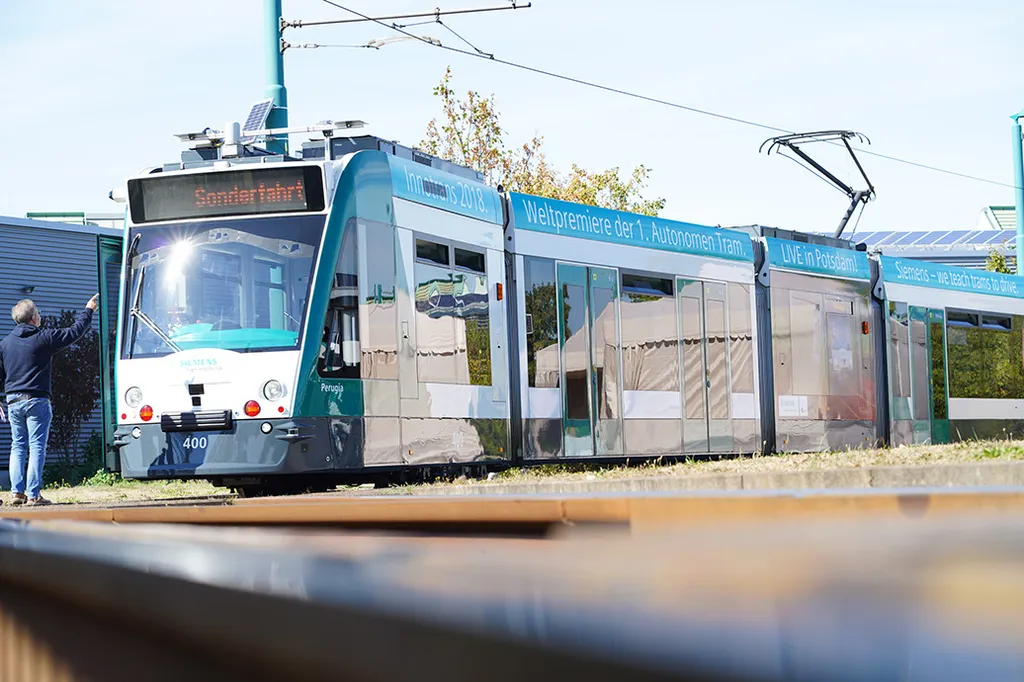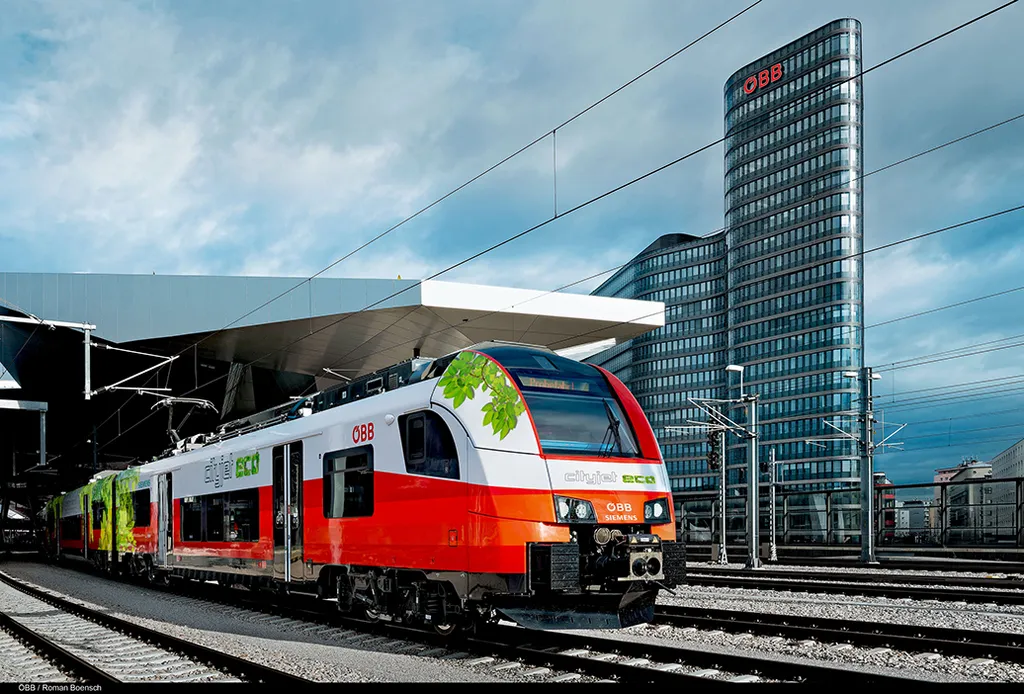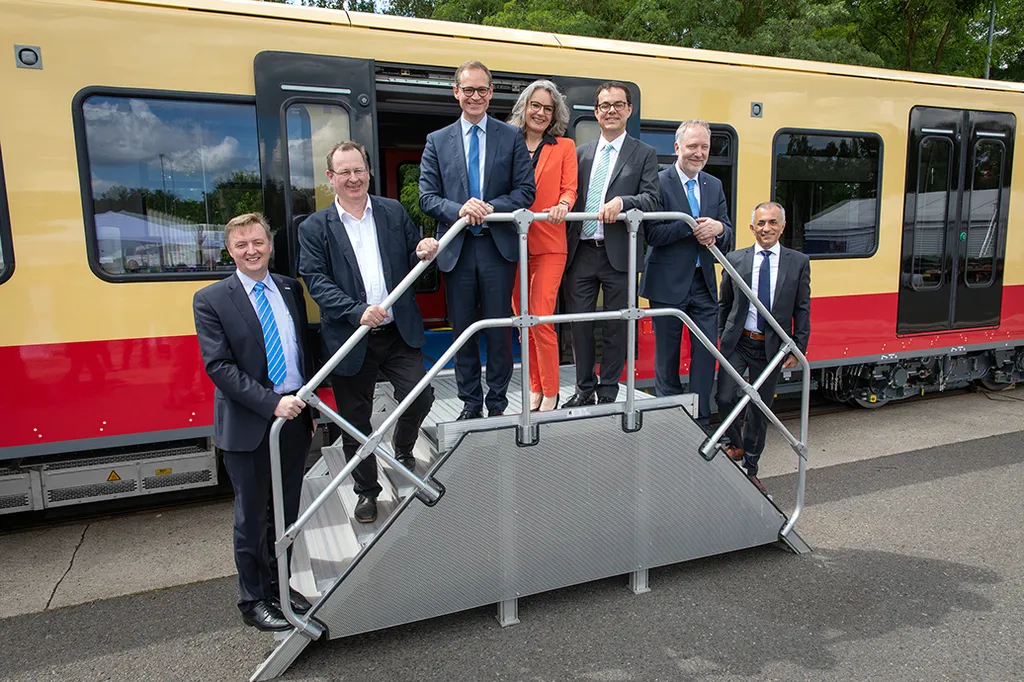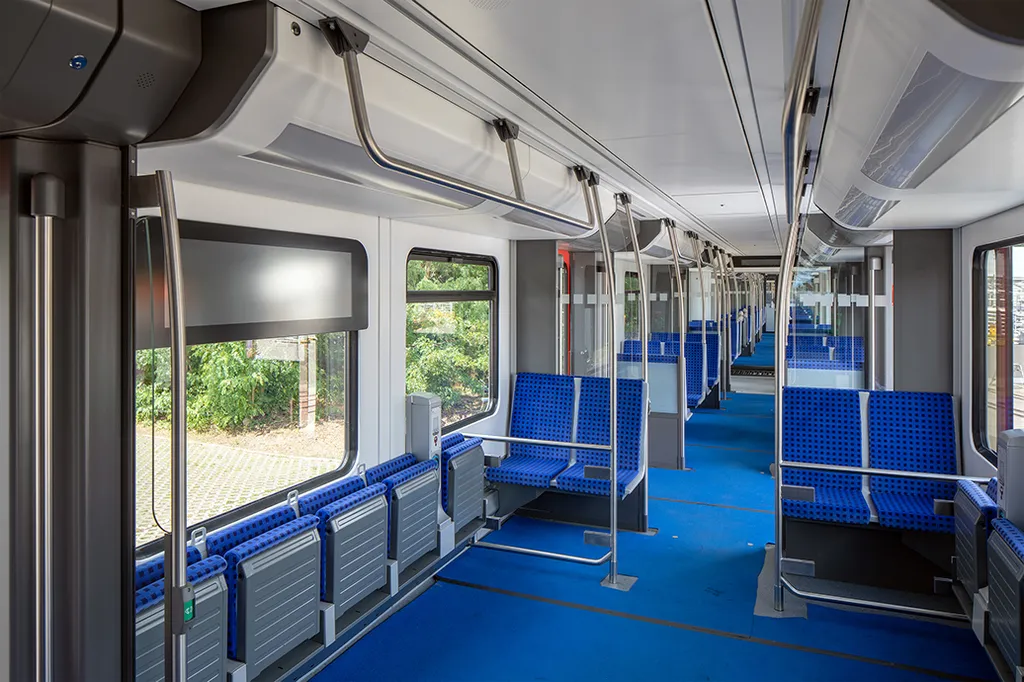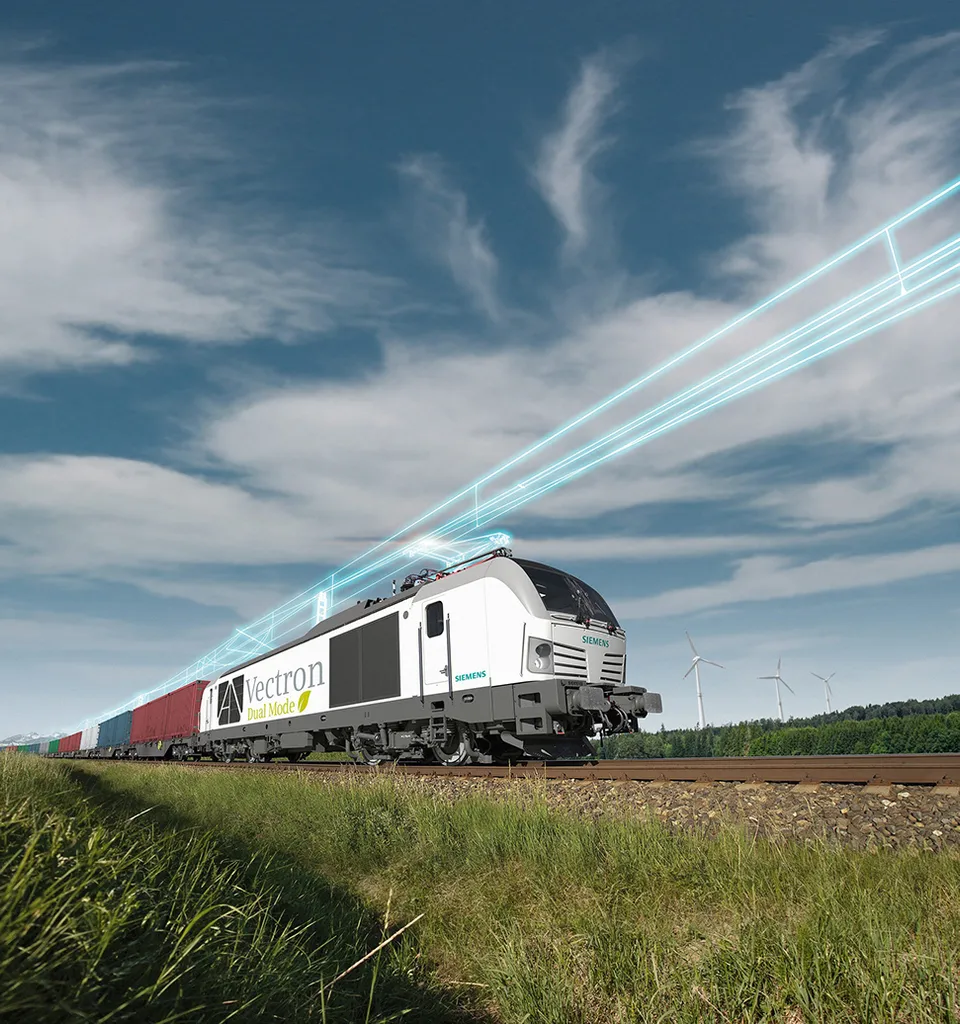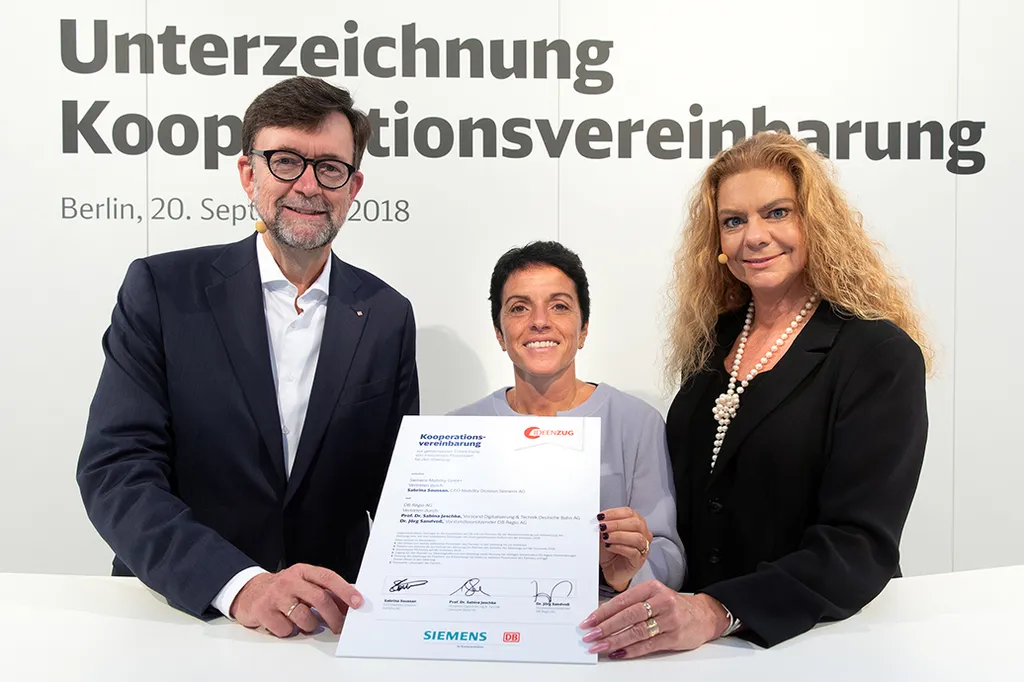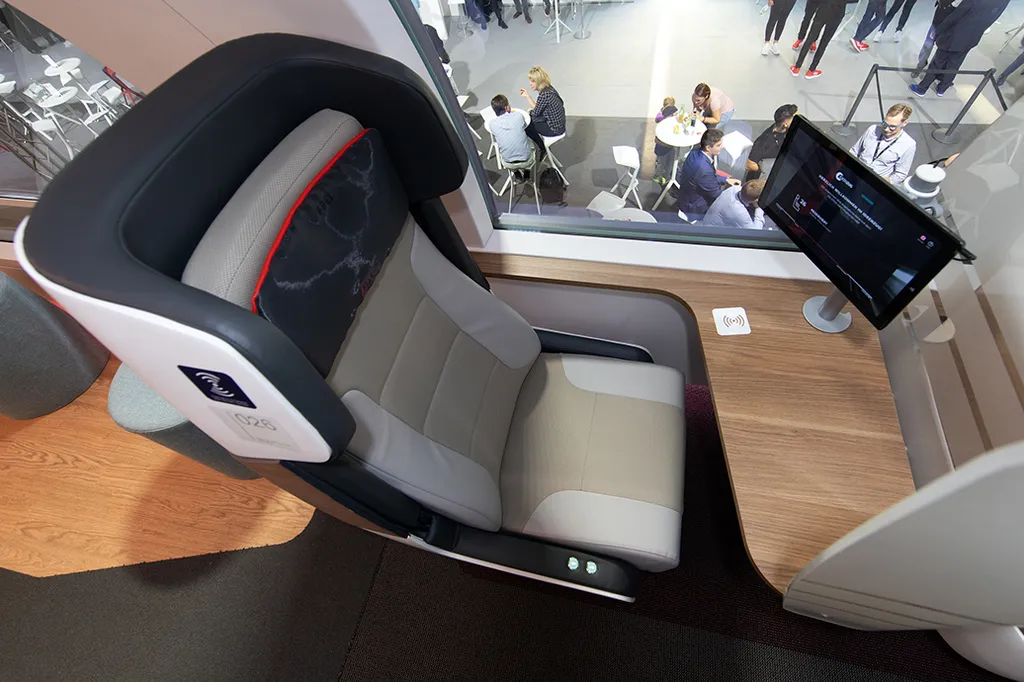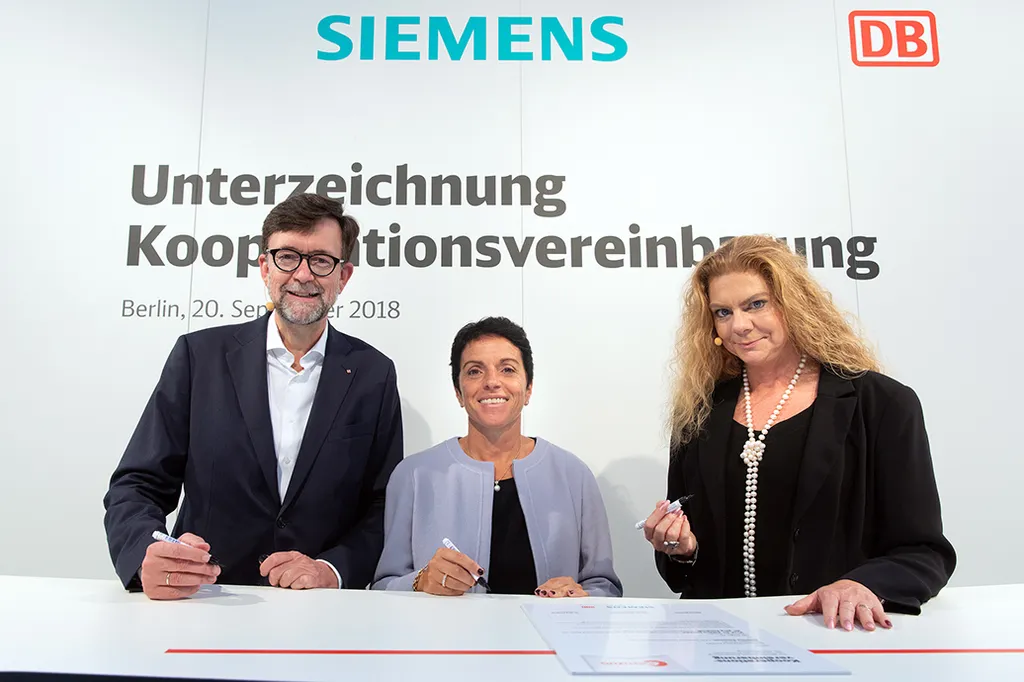Internet Explorer, Chrome Browser, Firefox Browser, Safari Browser
Press Event,
updated20 September 2018Siemens AG / Siemens Mobility GmbHMunich
Siemens Mobility at the InnoTrans 2018
Munich, 18 September to 21 September 2018
Siemens Mobility at InnoTrans 2018 – Overview
Under the motto "Shaping connected mobility" at the InnoTrans, Siemens is presenting digital innovations in an increasingly networked "total mobility system." The solutions will make rail transport even more efficient, safer and reliable.
Siemens events during InnoTrans 2018
- September 18, 2018
01:00 PM CEST: Presentation of the first half train of S-Bahn Berlin
02:00 PM CEST: Presentation of the Rhine-Ruhr-Express train
- September 19, 2018
02:30 PM CEST: Presentation of the first prototype of the battery-powered regional train type – Desiro ML ÖBB Cityjet eco
03:45 PM CEST: World Premiere of the Smartron Locomotive
- September 20, 2018
10:30 AM CEST: Deutsche Bahn and Siemens Mobility – signing of a cooperation contract for the "Idea Train"
Event Pictures: Siemens Mobility at InnoTrans 2018
Further Information
Press Conference ahead of the InnoTrans 2018
Velaro Novo – the new vehicle concept for high speed trains
The number of passengers traveling over long distances has been climbing for years, and operators of high-speed trains face tight competition with airlines and new providers of long-distance, road-based services. Future-proof trains with reduced lifecycle costs and enhanced travel comfort are therefore more important than ever for securing and increasing high-speed rail transport.
Press Pictures
Videos

Video Player is loading.
Siemens presents its new high-speed train the "Velaro Novo"
Siemens is presenting a new concept for high-speed trains at the InnoTrans 2018, the world's biggest trade fair for rail technology. The Velaro Novo sets new standards for efficiency and sustainability and at the same time offers the highest passenger comfort and convenience. Siemens has developed the new high-speed platform for service from 250 up to 360 km/h throughout the world.
Further Information
Presentations
Background Information
Links
Siemens Mobility presents world's first autonomous tram
Siemens Mobility, together with ViP Verkehrsbetrieb Potsdam GmbH, will be presenting their research project on the world’s first autonomous tram at InnoTrans 2018. On a six-kilometer section of the tram network in Potsdam, Germany, Siemens Mobility will be demonstrating a test tram driving autonomously in real traffic on September 18 through 21.
Press Pictures
Desiro ML - ÖBB and Siemens develop battery-powered train
Austrian Federal Railways (ÖBB) and Siemens Mobility are jointly investing in the future of passenger transport and are developing an electro-hybrid battery drive for trains. Today, both companies presented in Vienna the first result of this innovative pilot project, the prototype of the Desiro ML Cityjet eco. Operating as a battery-powered train, the Cityjet eco is an alternative for non-electrified rail lines primarily served at present with diesel-powered passenger trains. Battery operation can reduce CO2 emissions by up to 50 percent compared to diesels. Following extensive testing of the train, it is expected to first be used in passenger service in the second half of 2019.
Press Pictures
Further Information
How digitalization is shaping the future of mobility – digital station and cloud based signaling
Rail and road infrastructures have long since reached their limits in many metropolitan regions. Today, over half of the world's population already lives in cities, and by 2050, an additional 2.5 billion people will live in megacities and urban regions worldwide.
Infographics
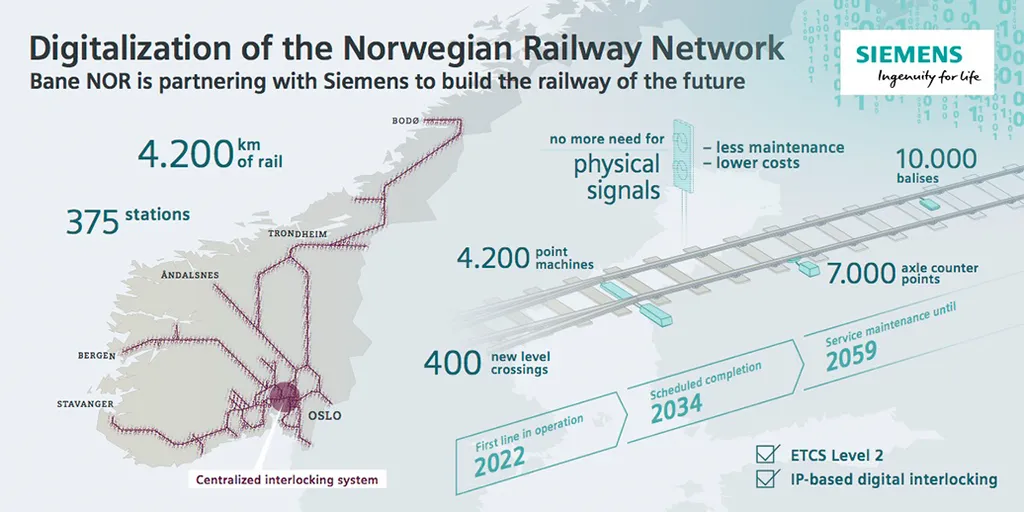
Digitalization of the Norwegian Railway Network
Bane NOR is partnering with Siemens to build the railway of the future.
Further Information
Presentations
Background Information
New trains for Berlin's S-Bahn
S-Bahn Berlin GmbH has signed a framework contract with the consortium of Stadler Pankow GmbH and Siemens for the delivery of up to 1,380 vehicles. A firm order was placed for the first 106 trains. The 85 four-section and 21 two-section trains have a high triple-digit million-euro order volume. S-Bahn Berlin, a subsidiary of Deutsche Bahn, plans to use the new trains on the Ringbahn lines (S 41 and S 42) as well as on the system's southeastern feeder lines S 47, S 46 and S 8. These lines comprise roughly one-third of the entire S-Bahn network in Berlin. The first ten vehicles will be ready to enter service as of 2020. Subsequently, all remaining vehicles will be delivered continuously to the Berlin system up to 2023. The vehicles will be manufactured and assembled at the Berlin plant operated by Stadler Pankow GmbH.
Event Pictures
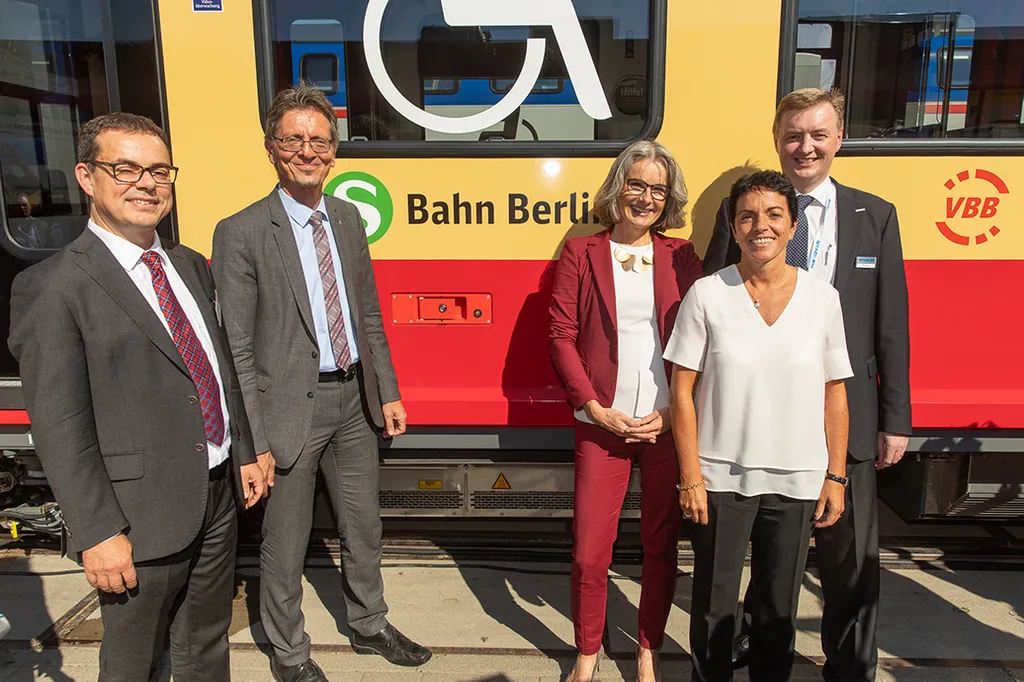
From Berlin for Berlin: Stadler and Siemens present first half train for the new S-Bahn
Today at InnoTrans, the leading international trade fair for transport technology, the manufacturer's consortium of Stadler and Siemens and S-Bahn Berlin presented the first "half train" for German capital's new S-Bahn fleet. The four-car train will begin operation in 2021 on Berlin's Ring/Southeast network.
The new train can be thoroughly inspected at this year's InnoTrans, being held on September 18-23. The train will also be open to the public on the trade fair's open-house days, giving Berlin's future passengers an opportunity to get their own first impressions of "their" new S-Bahn. The train itself is a true "Berliner": it was designed, developed and constructed by two companies that have deep roots in Berlin, and the 106 new trains have been precisely tailored to meet the needs of the city.
In the picture from left to right: Peter Buchner, Managing Director of S-Bahn Berlin GmbH; Christian Gaebler, Head of Senate Chancellery of the federal state of Berlin; Susanne Henckel, Managing Director of VBB Verkehrsverbund Berlin Brandenburg GmbH; Sabrina Soussan, CEO of Siemens Mobility and Ulf Braker, CEO of Stadler Pankow GmbH.
Further Information
Joint press release by Siemens, Stadler Pankow GmbH and Deutsche Bahn (September 18, 2018)
- Manufacturer's consortium presents train at the InnoTrans – S-Bahn train also open to the public on the weekend
Today at InnoTrans, the leading international trade fair for transport technology, the manufacturer's consortium of Stadler and Siemens and S-Bahn Berlin presented the first "half train" for German capital's new S-Bahn fleet. The four-car train will begin operation in 2021 on Berlin's Ring/Southeast network.
Commissioning begins: a further milestone for the new S-Bahn trains for Berlin and Brandenburg
The Rhine-Ruhr-Express boosts the quality of life in the Ruhr area
The century project "Rhine-Ruhr-Express" (RRX) is good news for millions of commuters in the most populated region of Europe. At the end of 2018 the first trains with a top speed up to 160 kilometers per hour will be in transit in the greater area Rhine-Ruhr. Siemens does not only deliver the trains but is also commissioned with the maintenance for 32 years. Thus, Siemens ensures the daily availability of the operating fleet.
Event Pictures

Siemens presented the Rhine-Ruhr-Express at Innotrans
On September 18, 2018, Siemens and the special-purpose associations Nahverkehr Rheinland (NVR), Nahverkehr Westfalen-Lippe (NWL), Schienenpersonennahverkehr Rheinland-Pfalz Nord (SPNV-Nord), the Verkehrsverbund Rhein-Ruhr (VRR) and the Nordhessischer Verkehrsverbund (NVV) presented the new Rhine-Ruhr-Express at Innotrans.
Siemens has developed a new design for the RRX fleet based on the successful Desiro platform. The train's concept combines premium features with state-of-the-art technology. Each train consists of four cars; the first and last as end car and driving trailer have one passenger deck, while the two middle cars are double-deckers. Each train has a seating capacity of 400. The trains are designed in a white, grey, black and orange color scheme. The design of the RRX continues into the interior, where generous sight lines and large windows provide a pleasant atmosphere. In addition, the RRX has Wi-Fi access and socket outlets throughout the train, folding tables and reading lights in first-class, as well as advanced information systems and energy-efficient traction units and air-conditioning.
Siemens was commissioned in March 2015 to deliver 82 multiple-unit electric Desiro HC trains and provide their maintenance for a period of 32 years. The order has a total volume of over €1.7 billion.
In the picture from left to right: Heiko Sedlaczek, CEO Verkehrsverband Rhein-Sieg/Nahverkehr Rheinland; Martin Husmann, CEO Verkehrsverbund Rhein-Ruhr (VRR); Sabrina Soussan, CEO of Siemens Mobility GmbH; Joachim Künzel CEO Regional Association of Westphalia-Lippe (NWL), and Dr. Thomas Geyer, Association Director Special Purpose Association for regional rail transportation Rhineland-Palatinate North (SPNV-Nord)
Press Pictures
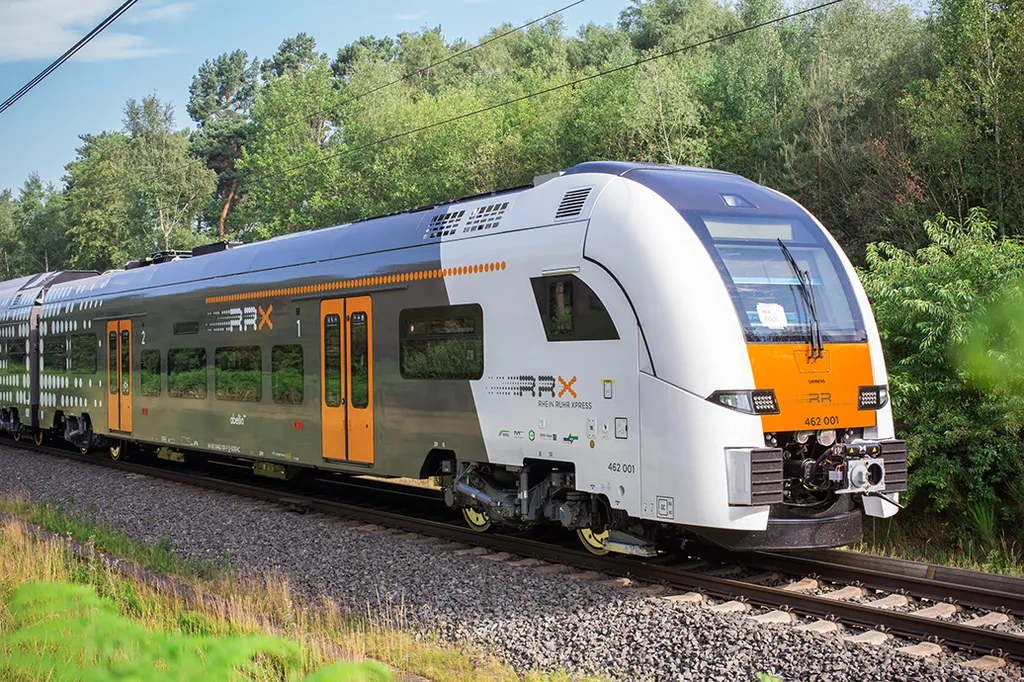
Prototype of the Rhine-Ruhr Express presented
The Rhine-Ruhr express has been a long-cherished dream to bring a new quality of life to the metropolitan region. A dream is now due to become reality in the near future, with fast, comfortable trains running through the urban landscape at 15 minute intervals during peak travel times in a rail network running right across North Rhine-Westphalia, and extending up the Rhine to Koblenz and as far east as Kassel. Siemens will not only supply the trains, but has also been contracted to maintain them for the next 32 years to ensure that the fleet is available every day.
Further Information
Background Information
New locomotives "Vectron Dual Mode" and "Smartron" – sustainable and economical solution for freight transport
Siemens Mobility will be presenting new locomotives at the InnoTrans 2018:
The Vectron Dual Mode can be operated as both a diesel and electric locomotive. On electrified sections of track, the new locomotive is powered by electricity to save fuel and reduce maintenance costs. The locomotive can be switched to diesel mode on non-electrified sections. The Vectron Dual Mode concept enables operators to increase their sustainable value throughout the locomotive's lifecycle.
The Smartron is tailored for a specific transport function and utilizes all the advantages provided by standardization. As a preconfigured locomotive, the Smartron has been conceived for transporting freight in Germany and ensures customers cost-efficient operation and the highest safety standards.
The Vectron Dual Mode can be operated as both a diesel and electric locomotive. On electrified sections of track, the new locomotive is powered by electricity to save fuel and reduce maintenance costs. The locomotive can be switched to diesel mode on non-electrified sections. The Vectron Dual Mode concept enables operators to increase their sustainable value throughout the locomotive's lifecycle.
The Smartron is tailored for a specific transport function and utilizes all the advantages provided by standardization. As a preconfigured locomotive, the Smartron has been conceived for transporting freight in Germany and ensures customers cost-efficient operation and the highest safety standards.
Press Pictures
Deutsche Bahn and Siemens Mobility sign a cooperation agreement for the Ideas Train
Deutsche Bahn and Siemens Mobility entered into an agreement to collaborate on the DB Regio Ideas Train today at InnoTrans, the leading trade fair for rail and transport technology. The agreement signed today makes the Ideas Train available as a platform for partners in the vehicle industry to test components and prototypes. Siemens Mobility is the first system manufacturer to sign up.
The partnership aims to merge components from the two companies and develop the Ideas Train platform to create a travel experience with digital features that is designed to meet the target group's needs.
